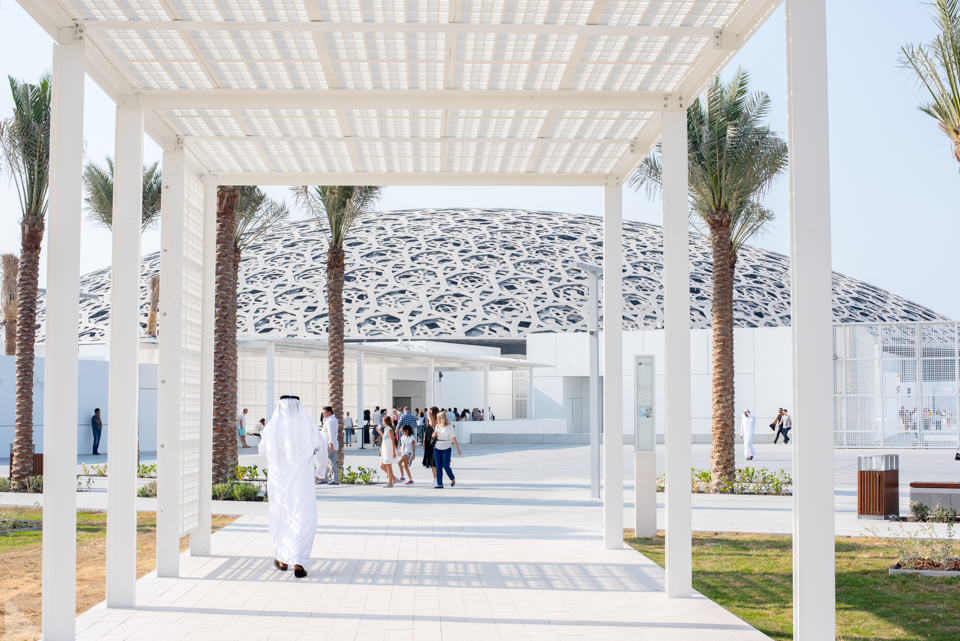Louvre Abu Dhabi, United Arab Emirates
Built "into" the sea, Nouvel's use of water, light, and geometry grace the architectural landscape with a peaceful environment where visitors contemplate works of art or simply have time for reflection while watching light pass along white walls, or dhows (traditional wooden boats) float by in the Arabian Gulf.
As a visitor and user of the space, I observer that form and function coexist like the "chicken and the egg" (although, by all time and fiduciary accounts, function likely followed form on this plot of land and Gulf water). The feeling of being welcome to walk through a complex of space that is meant to be freely explored and used is refreshing. It is apparent that even tiny details in the architectural design were attended to - just as the details of the museum's story are thoughtfully woven together through the collections of art and forms that guests explore through time and geography.

The variety of gallery rooms travel through time, from some ancient human forms found in Jordan to the post-modern artwork of today. The curators thoughtfully integrated Islam, Christianity, and Hinduism (three religions most well-represented in the UAE) in this timeline of galleries, juxtaposing otherwise unfamiliar pieces from each religion next to each other.
For me, visiting the Louvre Abu Dhabi was an inspiring journey and a good reminder that thoughtful, inviting, and usable designs (whether it be in a database, street map, document, restaurant menu, service plan, packaging, master plan, or interior concept) can make an enormous difference in the way people/users perceive and navigate the world around them. What are each of us doing to design better spaces to live, die, work, and play in?
---
© 2017 Andrea Rip | The Earth Ink. All Rights Reserved.
For reuse or press enquiries: theearthink@gmail.com.







Comments